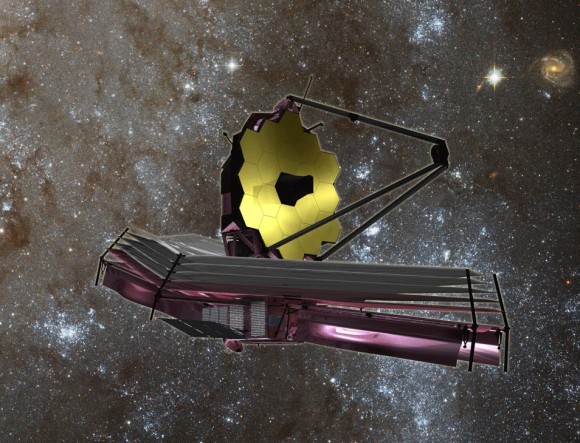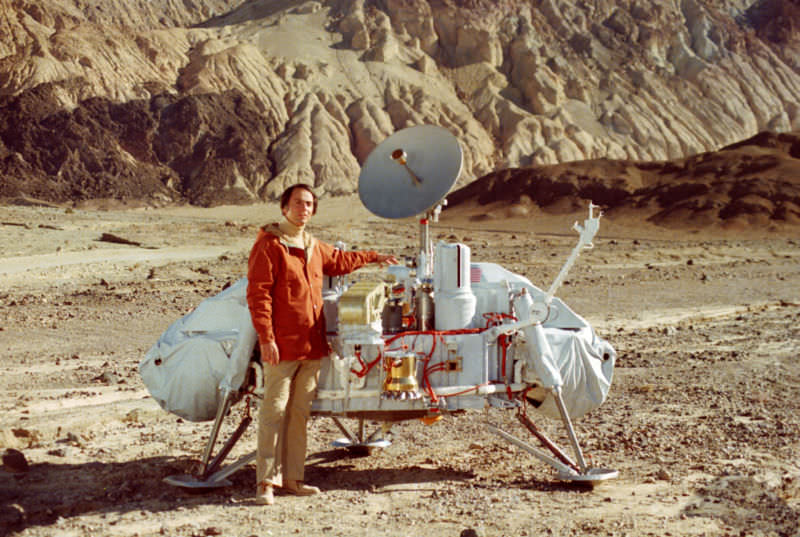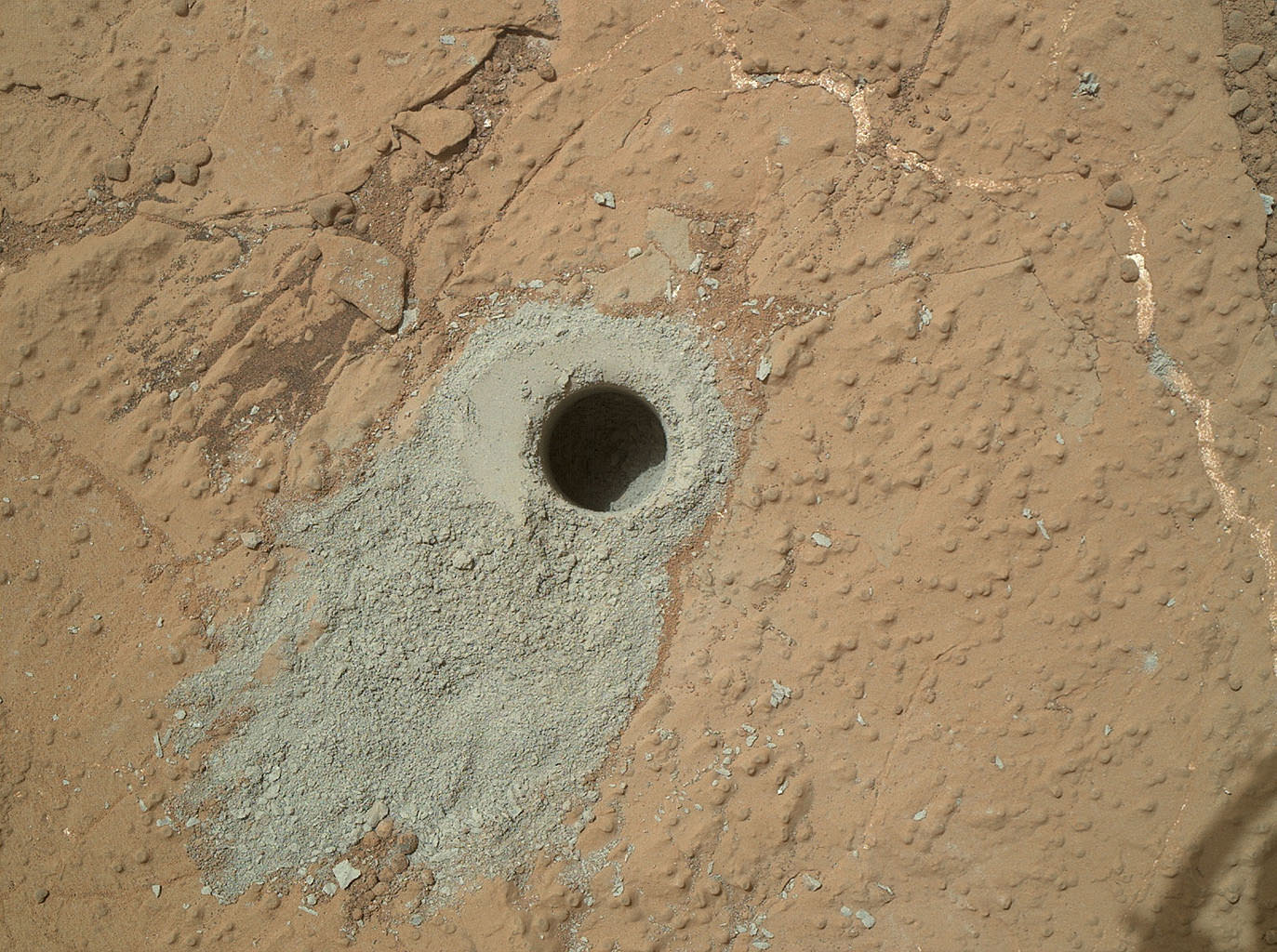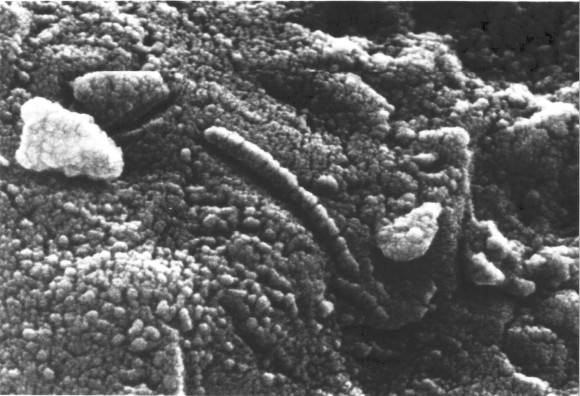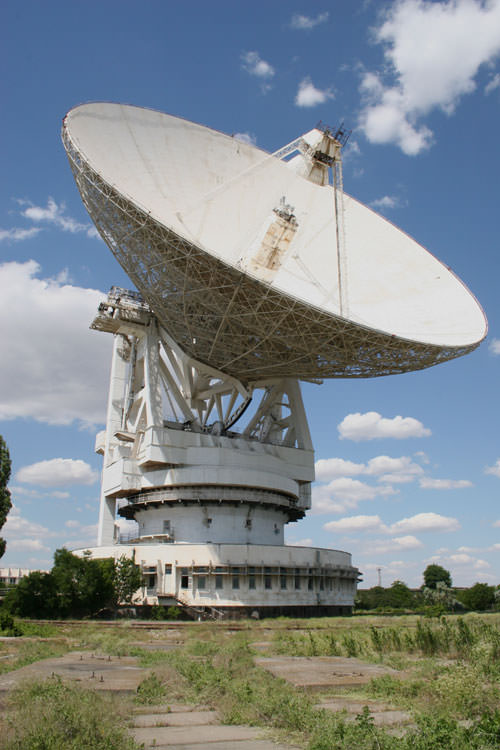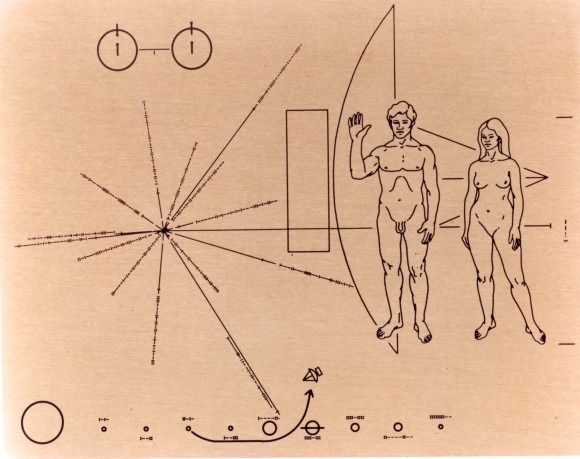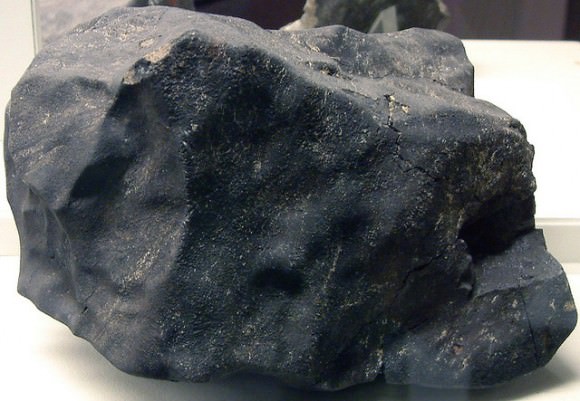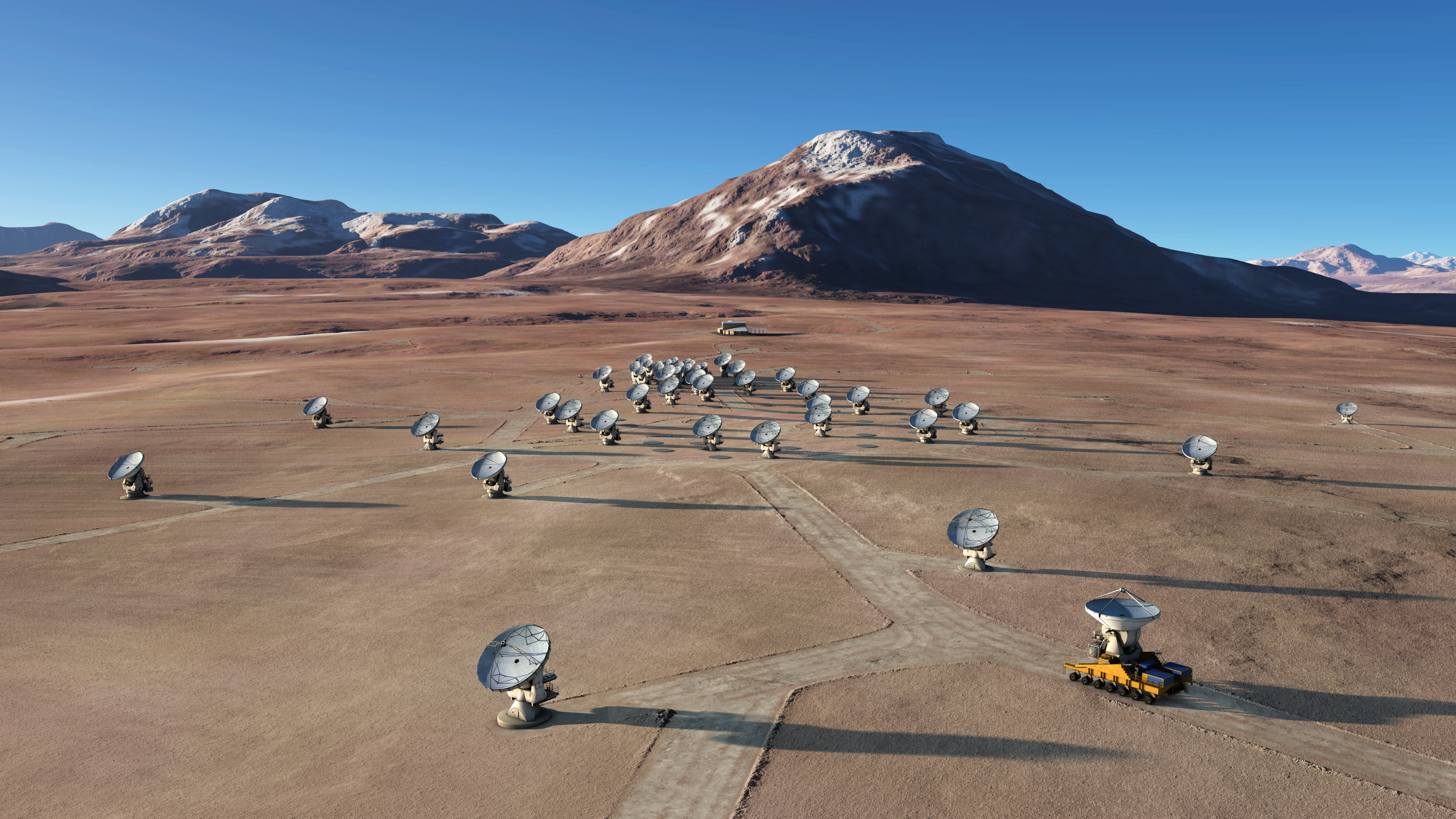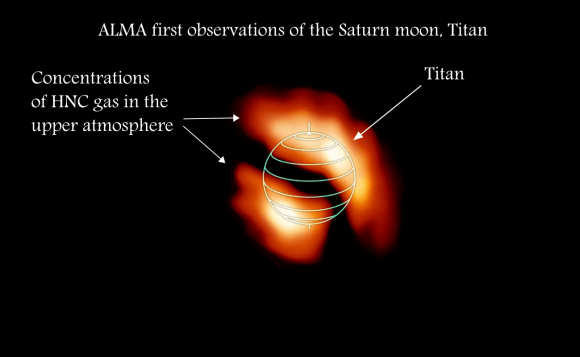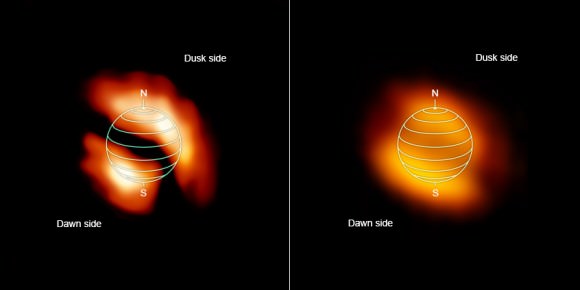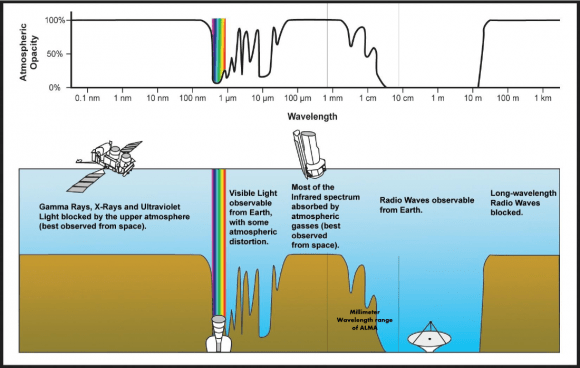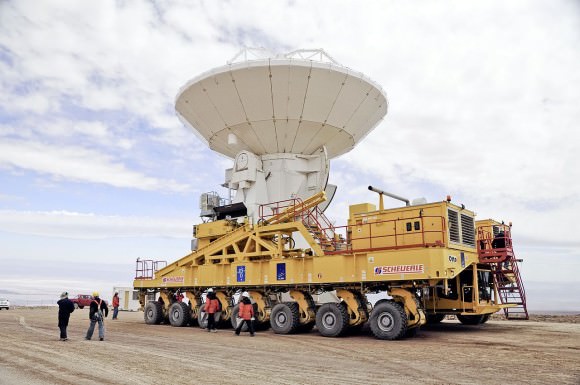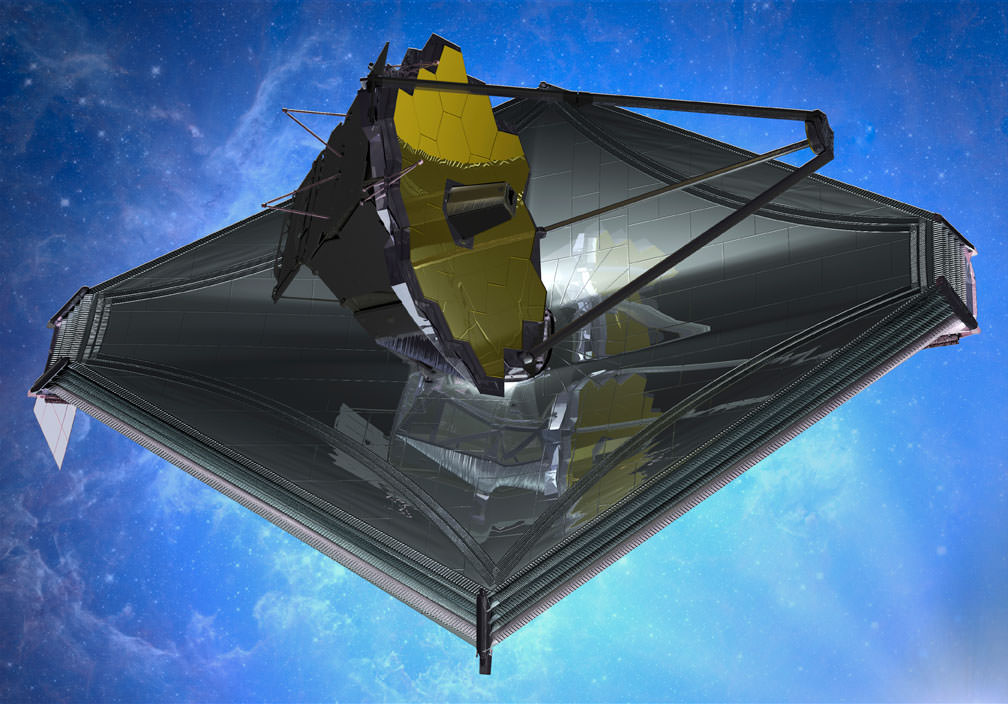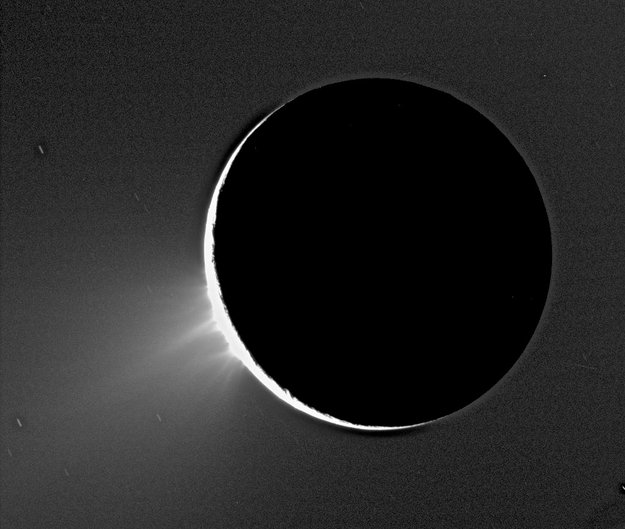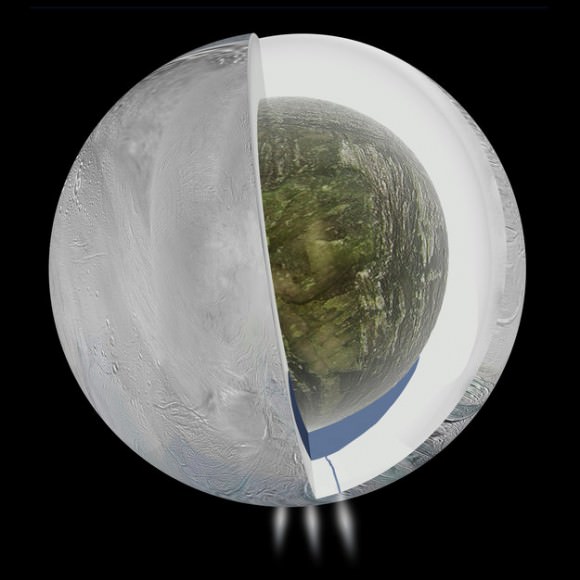Should we beam messages into deep space, announcing our presence to any extraterrestrial civilizations that might be out there? Or, should we just listen? Since the beginnings of the modern Search for Extraterrestrial Intelligence (SETI), radio astronomers have, for the most part, followed the listening strategy.
In 1999, that consensus was shattered. Without consulting with other members of the community of scientists involved in SETI, a team of radio astronomers at the Evpatoria Radar Telescope in Crimea, led by Alexander Zaitsev, beamed an interstellar message called ‘Cosmic Call’ to four nearby sun-like stars. The project was funded by an American company called Team Encounter and used proceeds obtained by allowing members of the general public to submit text and images for the message in exchange for a fee.
Similar additional transmissions were made from Evpatoria in 2001, 2003, and 2008. In all, transmissions were sent towards twenty stars within less than 100 light years of the sun. The new strategy was called Messaging to Extraterrestrial Intelligence (METI). Although Zaitsev was not the first to transmit an interstellar message, he and his associates where the first to systematically broadcast to nearby stars. The 70 meter radar telescope at Evpatoria is the second largest radar telescope in the world.
In the wake of the Evpatoria transmissions a number of smaller former NASA tracking and research stations collected revenue by making METI transmissions as commercially funded publicity stunts. These included a transmission in the fictional Klingon language from Star Trek to promote the premier of an opera, a Dorito’s commercial, and the entirety of the 2008 remake of the classic science fiction movie “The Day the Earth Stood Still”. The specifications of these commercial signals have not been made public, but they were most likely much too faint to be detectable at interstellar distances with instruments comparable to those possessed by humans.
Zaitsev’s actions stirred divisive controversy among the community of scientists and scholars concerned with the field. The two sides of the debate faced off in a recent special issue of the Journal of the British Interplanetary Society, resulting from a live debate sponsored in 2010 by the Royal Society at Buckinghamshire, north of London, England.

Modern SETI got its start in 1959, when astrophysicists Giuseppe Cocconi and Phillip Morrison published a paper in the prestigious scientific journal Nature, in which they showed that the radio telescopes of the time were capable of receiving signals transmitted by similar counterparts at the distances of nearby stars. Just months later, radio astronomer Frank Drake turned an 85 foot radio telescope dish towards two nearby sun-like stars and conducted Project Ozma, the first SETI listening experiment. Morrison, Drake, and the young Carl Sagan supposed that extraterrestrial civilizations would “do the heavy lifting” of establishing powerful and expensive radio beacons announcing their presence. Humans, as cosmic newcomers that had just invented radio telescopes, should search and listen. There was no need to take the risk, however small, of revealing our presence to potentially hostile aliens.
Drake and Sagan did indulge in one seeming exception to their own moratorium. In 1974, the pair devised a brief 1679 bit message that was transmitted from the giant Arecibo Radar Telescope in Puerto Rico. But the transmission was not a serious attempt at interstellar messaging. By intent, it was aimed at a vastly distant star cluster 25,000 light years away. It merely served to demonstrate the new capabilities of the telescope at a rededication ceremony after a major upgrade.
In the 1980’s and 90’s SETI researchers and scholars sought to formulate a set of informal rules for the conduct of their research. The First SETI Protocol specified that any reply to a confirmed alien message must be preceded by international consultations, and an agreement on the content of the reply. It was silent on the issue of transmissions sent prior to the discovery of an extraterrestrial signal.
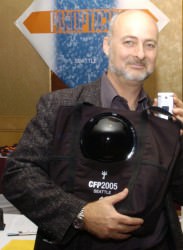
Brin accuses “the core community that clusters around the SETI Institute in Silicon Valley, California”, including astronomers Jill Tartar and Seth Shostak of “running interference for and enabling others around the world- such as Russian radio astronomer Dr. Alexander Zaitsev” to engage in METI efforts. Shostak denies this, and claims he simply sees no clear criteria for regulating such transmissions.
Brin, along with Michael A. G. Michaud, a former U.S. Foreign Service Officer and diplomat who chaired the committee that formulated the first and second protocol, and John Billingham, the former head of NASA’s short lived SETI effort, resigned their memberships in SETI related committees to protest the alterations to the second protocol.
The founders of SETI felt that extraterrestrial intelligence was likely to be benign. Carl Sagan speculated that extraterrestrial civilizations (ETCs) older than ours would, under the pressure of necessity, become peaceful and environmentally responsible, because those that didn’t would self-destruct. Extraterrestrials, they supposed, would engage in interstellar messaging because of a wish to share their knowledge and learn from others. They supposed that ETCs would establish powerful omnidirectional beacons in order to assist others in finding them and joining a communications network that might span the galaxy. Most SETI searches have been optimized for detecting such steady constantly transmitting beacons.
Over the fifty years since the beginnings of SETI, searches have been sporadic and plagued with constant funding problems. The space of possible directions, frequencies, and coding strategies has only barely been sampled so far. Still, David Brin contends that whole swaths of possibilities have been eliminated “including gaudy tutorial beacons that advanced ETCs would supposedly erect, blaring helpful insights to aid all newcomers along the rocky paths”. The absence of obvious, easily detectable evidence of extraterrestrial intelligence has led some to speak of the “Great Silence”. Something, Brin notes, “has kept the prevalence and visibility of ETCs below our threshold of observation”. If alien civilizations are being quiet, could it be that they know something that we don’t know about some danger?
Alexander Zaitsev thinks that such fears are unfounded, but that other civilizations might suffer from the same reluctance to transmit that he sees as plaguing humanity. Humanity, he thinks, should break the silence by beaming messages to its possible neighbors. He compares the current state of humanity to that of a man trapped in a one-man prison cell. “We”, he writes “do not want to live in a cocoon, in a ‘one –man cell’, without any rights to send a message outside, because such a life is not INTERESTING! Civilizations forced to hide and tremble because of farfetched fears are doomed to extinction”. He notes that in the ‘60’s astronomer Sebastian von Hoerner speculated that civilizations that don’t engage in interstellar communication eventually decline through “loss of interest”.
METI critics maintain that questions of whether or not to send powerful, targeted, narrowly beamed interstellar transmissions, and of what the content of those transmissions should be needs to be the subject of broad international and public discussion. Until such discussion has taken place, they want a temporary moratorium on such transmissions.

Shostak argues that exotic possibilities might be available to a very technologically advanced society. If a telescope were placed at a distance of 550 times the Earth’s distance from the sun, it would be in a position to use the sun’s gravitational field as a gigantic lens. This would give it an effective collecting area vastly larger than the city of Chicago, for free. If advanced extraterrestrials made use of their star’s gravitational field in this way, Shostak maintains “that would give them the capacity to observe many varieties of terrestrial transmissions, and in the optical they would have adequate sensitivity to pick up the glow of street lamps”. Even Brin conceded that this idea was “intriguing”.
Civilizations in a position to do us potential harm through interstellar travel, Shostak contends, would necessarily be technologically advanced enough to have such capabilities. “We cannot pretend that our present level of activity with respect to broadcasting or radar usage is ‘safe’. If danger exists, we’re already vulnerable” he concludes. With no clear means to say what extraterrestrials can or can’t detect, Shostak feels the SETI community has nothing concrete to contribute to the regulation of radio transmissions.
Could extraterrestrials harm us? In 1897 H. G. Wells published his science fiction classic “The War of the Worlds” in which Earth was invaded by Martians fleeing their arid, dying world. Besides being scientifically plausible in terms of its times, Wells’ novel had a political message. An opponent of British colonialism, he wanted his countrymen to imagine what imperialism was like from the other side. Tales of alien invasion have been a staple of science fiction ever since. Some still regard European colonialism as a possible model for how extraterrestrials might treat humanity. The eminent physicist Steven Hawking thinks very advanced civilizations might have mastered interstellar travel. Hawking warned that “If aliens visit us, the outcome would be much as when Columbus landed in America, which didn’t turn out well for the Native Americans”.
Though dismissing Hawking’s fears of alien invasion as an “unlikely speculation”, David Brin notes that interstellar travel by small automated probes is quite feasible, and that such a probe could potentially do harm to us in many ways. It might, for example, steer an asteroid onto a collision course with Earth. A relatively small projectile traveling at one tenth the speed of light could wreak terrible damage by simply colliding with our planet. “The list of unlikely, but physically quite possible scenarios is very long” he warns.
Diplomat Michael Michaud warns that “We can all understand the frustration of not finding any signals after fifty years of intermittent searching” but “Impatience with the search is not a sufficient justification for introducing a new level of potential risk for our entire species”.
METI critics David Brin, James Benford, and James Billingham think that the current lack of results from SETI warrants a different sort of response than METI. They call for a reassessment of the search strategy. From the outset, SETI researchers have assumed that extraterrestrials will use steady beacons transmitting constantly in all directions to attract our attention. Recent studies of interstellar radio propagation and the economics of signaling show that such a beacon, which would need to operate on a vast timescale, is not an efficient way to signal.
Instead, an alien civilization might compile a list of potentially habitable worlds in its neighborhood and train a narrowly beamed signal on each member of the list in succession. Such brief “ping” messages might be repeated, in sequence, once a year, once a decade, or once a millennium. Benford and Billingham note that most SETI searches would miss this sort of signal.
The SETI Institute’s Allen telescope array, for example, is designed to target narrow patches of sky (such as the space around a sun-like star) and search those patches in sequence, for the presence of continuously transmitting beacons. It would miss a transient “ping” signal, because it would be unlikely to be looking in the right place at the right time. Ironically, the Evpatoria messages, transmitted for less than a day, are examples of such transient signals.
Benford and Billingham propose the construction of a new radio telescope array designed to constantly monitor the galactic plane (where stars are most abundant) for transient signals. Such a telescope array, they estimate, would cost about 12 million dollars, whereas a serious, sustained METI program would cost billions.
The METI controversy continues. On February 13, the two camps debated each other at the American Association for the Advancement of Science conference in San Jose, California. At that conference David Brin commented “It’s an area where opinion rules, and everyone has a fierce opinion”. In the wake of the meeting a group of 28 scientists, scholars, and business leaders issued a statement that “We feel the decision whether or not to transmit must be based on a worldwide consensus, and not a decision based on the wishes of a few individuals with access to powerful communications equipment”.
References and Further Reading:
J. Benford, J. Billingham, D. Brin, S. Dumas, M. Michaud, S. Shostak, A. Zaitsev, (2014) Messaging to Extraterrestrial Intelligence special section, Journal of the British Interplanetary Society, 67, p. 5-43.
D. Brin, Shouting at the cosmos: How SETI has taken a worrisome turn into dangerous territory.
F. Cain (2013) How could we find aliens? The search for extraterrestrial intelligence (SETI), Universe Today.
E. Hand (2015), Researchers call for interstellar messages to alien civilizations, Science Insider, Science Magazine.
P. Patton (2014) Communicating across the cosmos, Part 1: Shouting into the darkness, Part 2: Petabytes from the Stars, Part 3: Bridging the Vast Gulf, Part 4: Quest for a Rosetta Stone, Universe Today.


